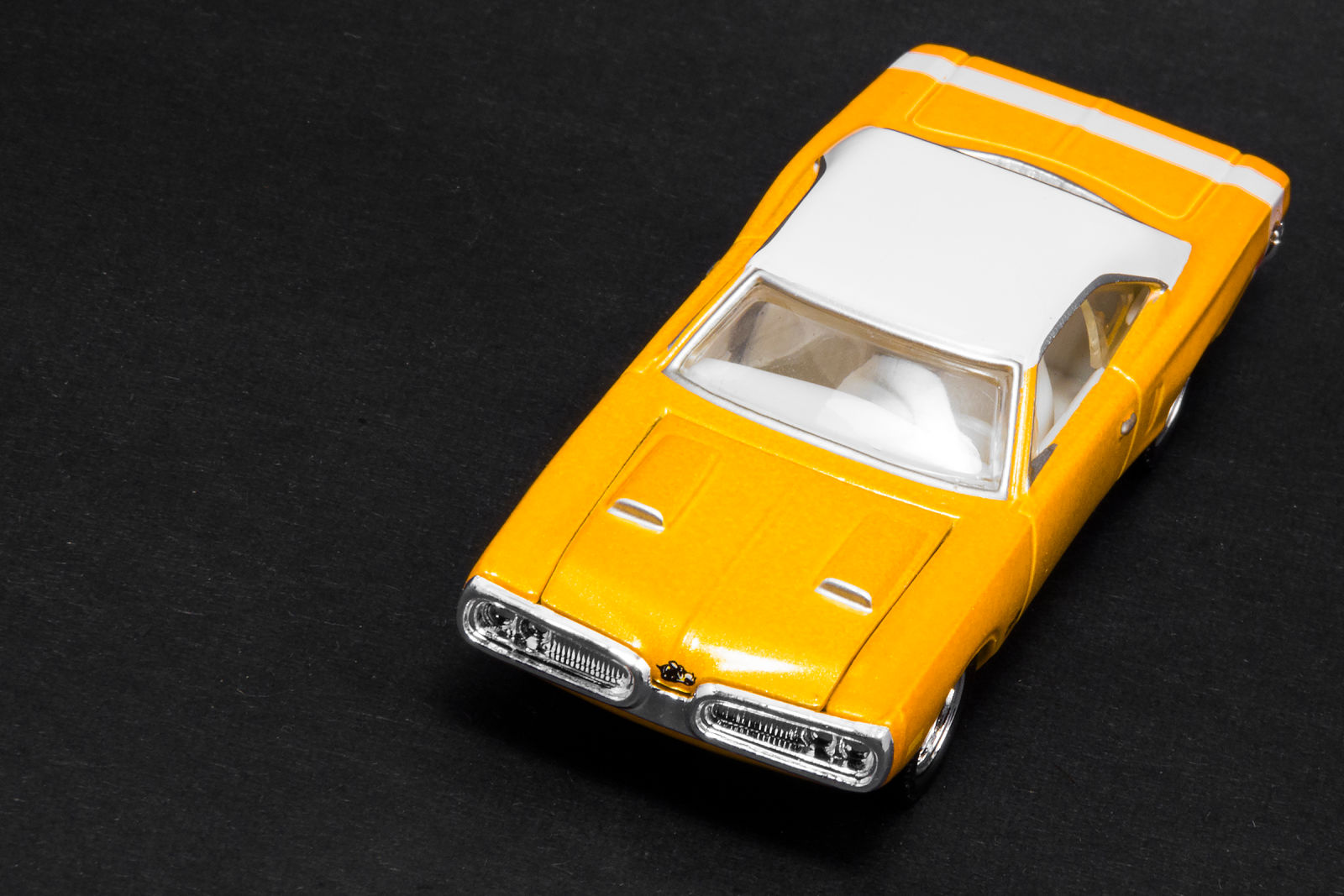
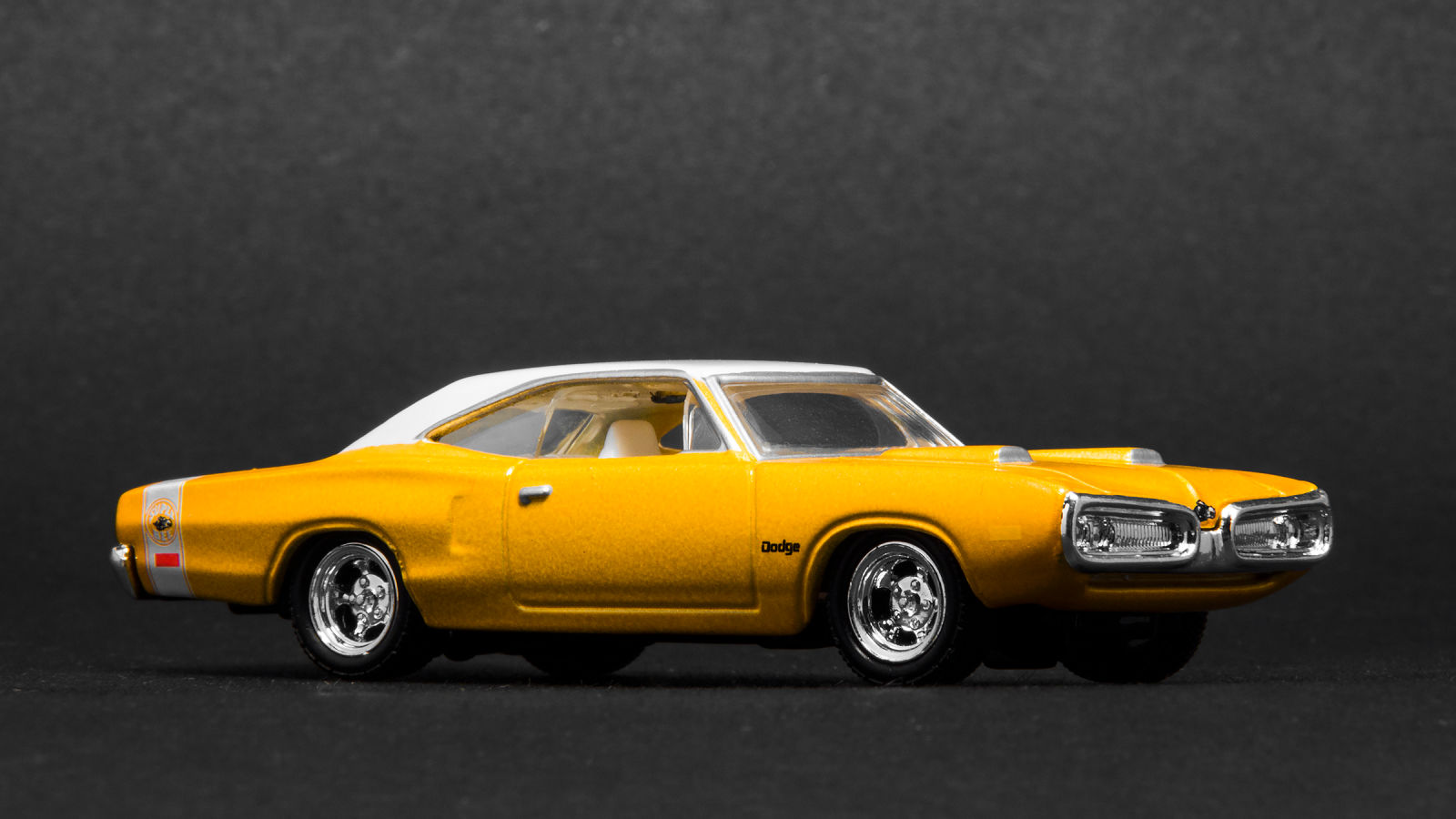
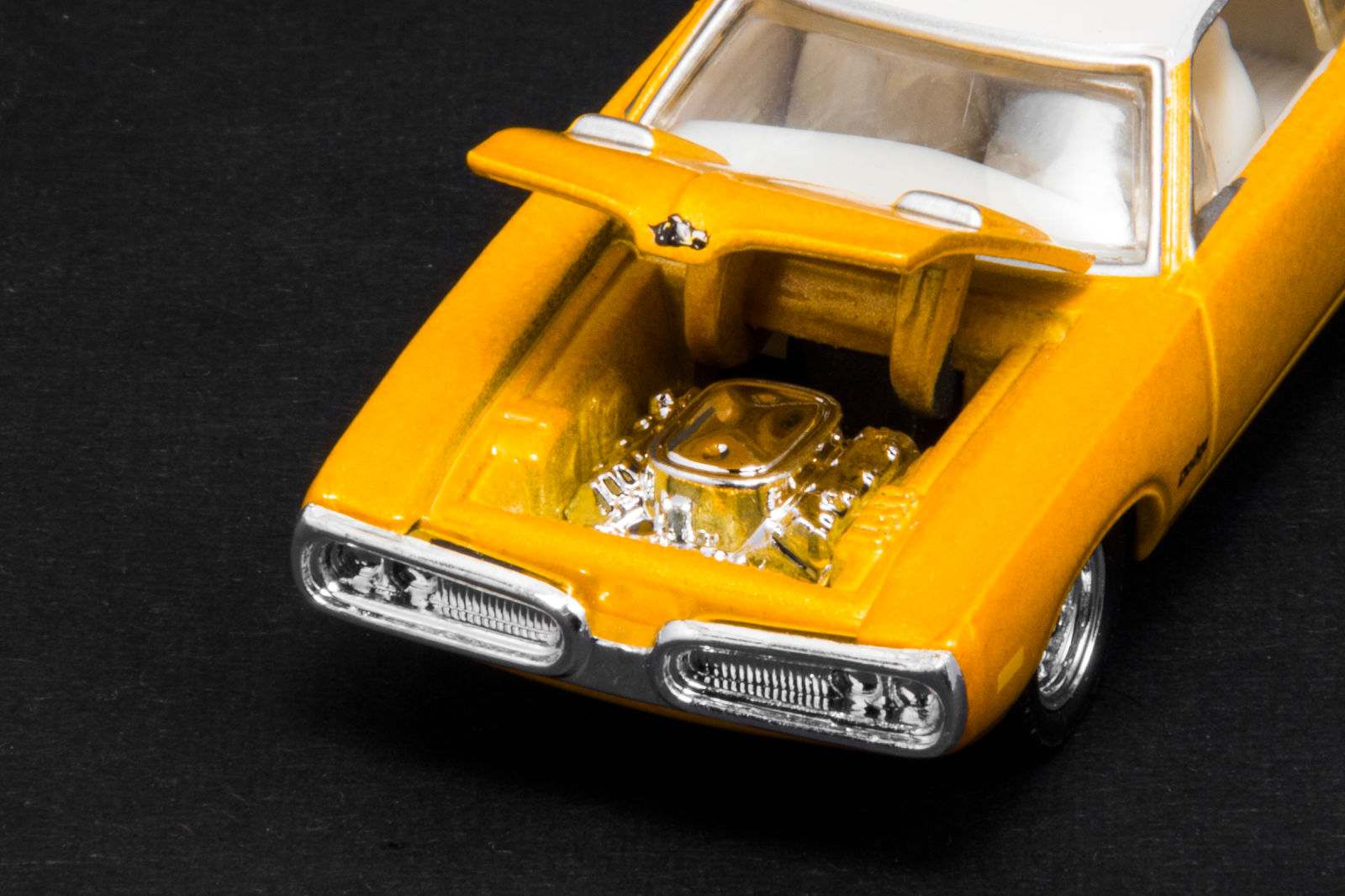
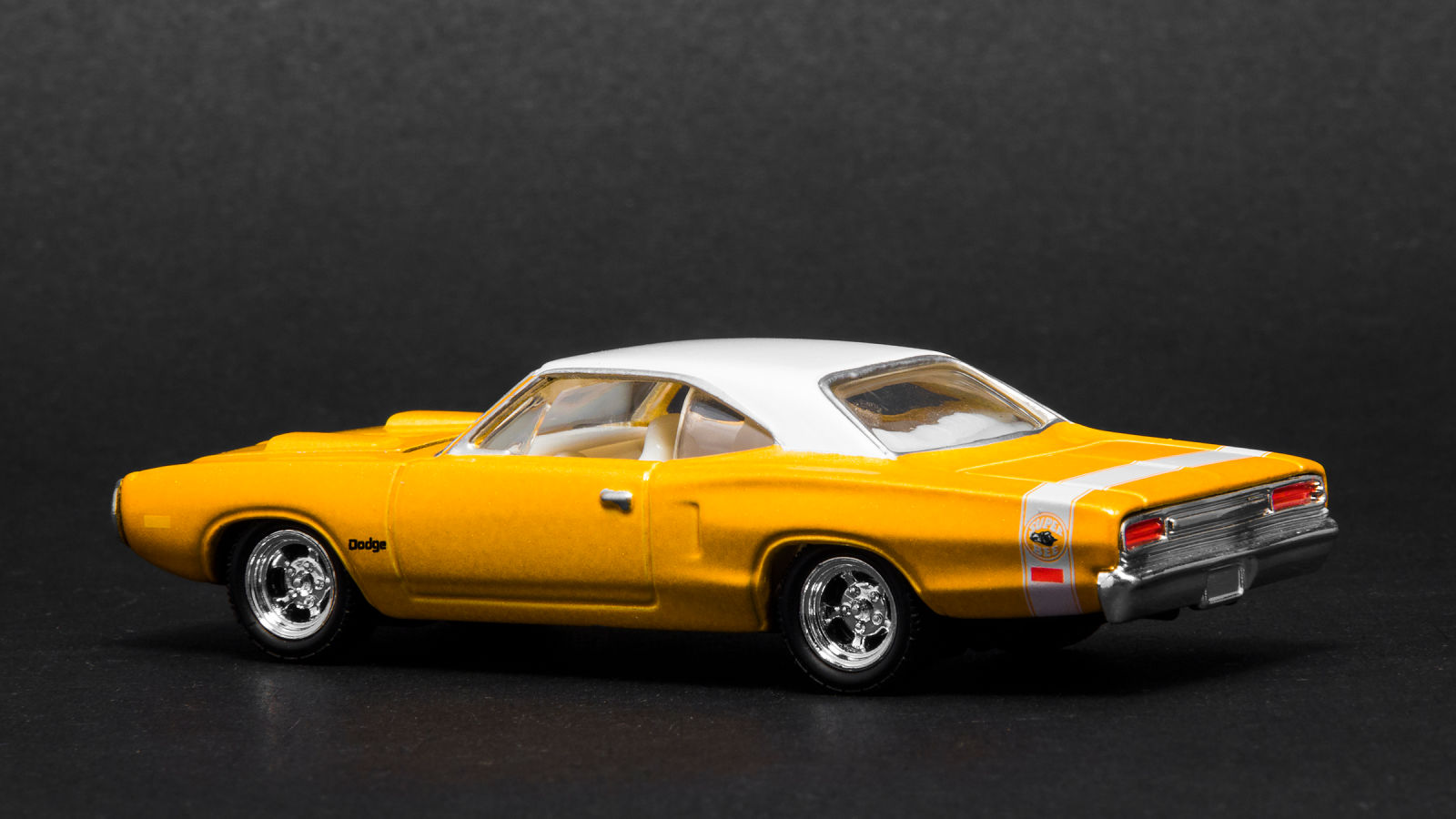
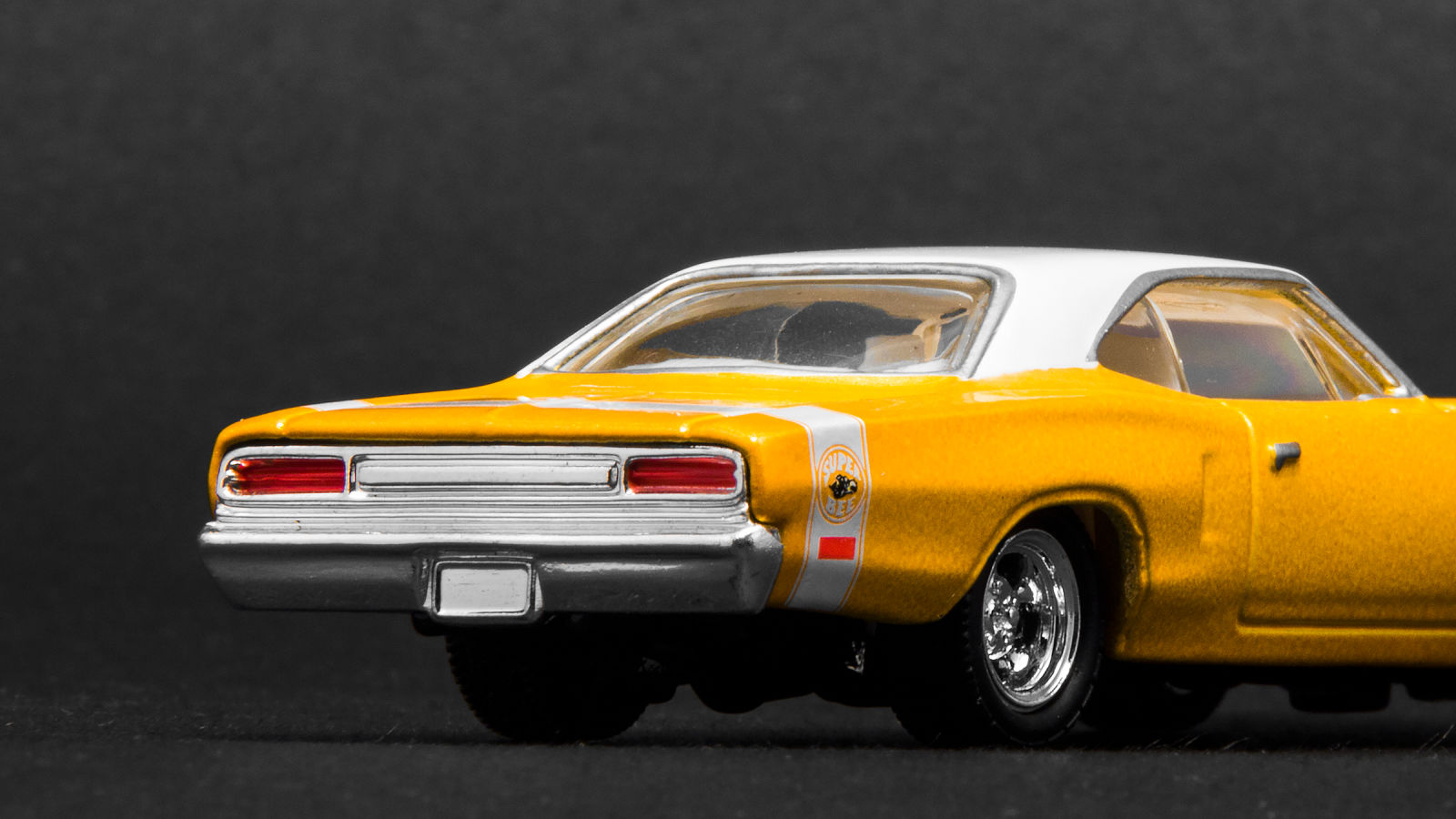
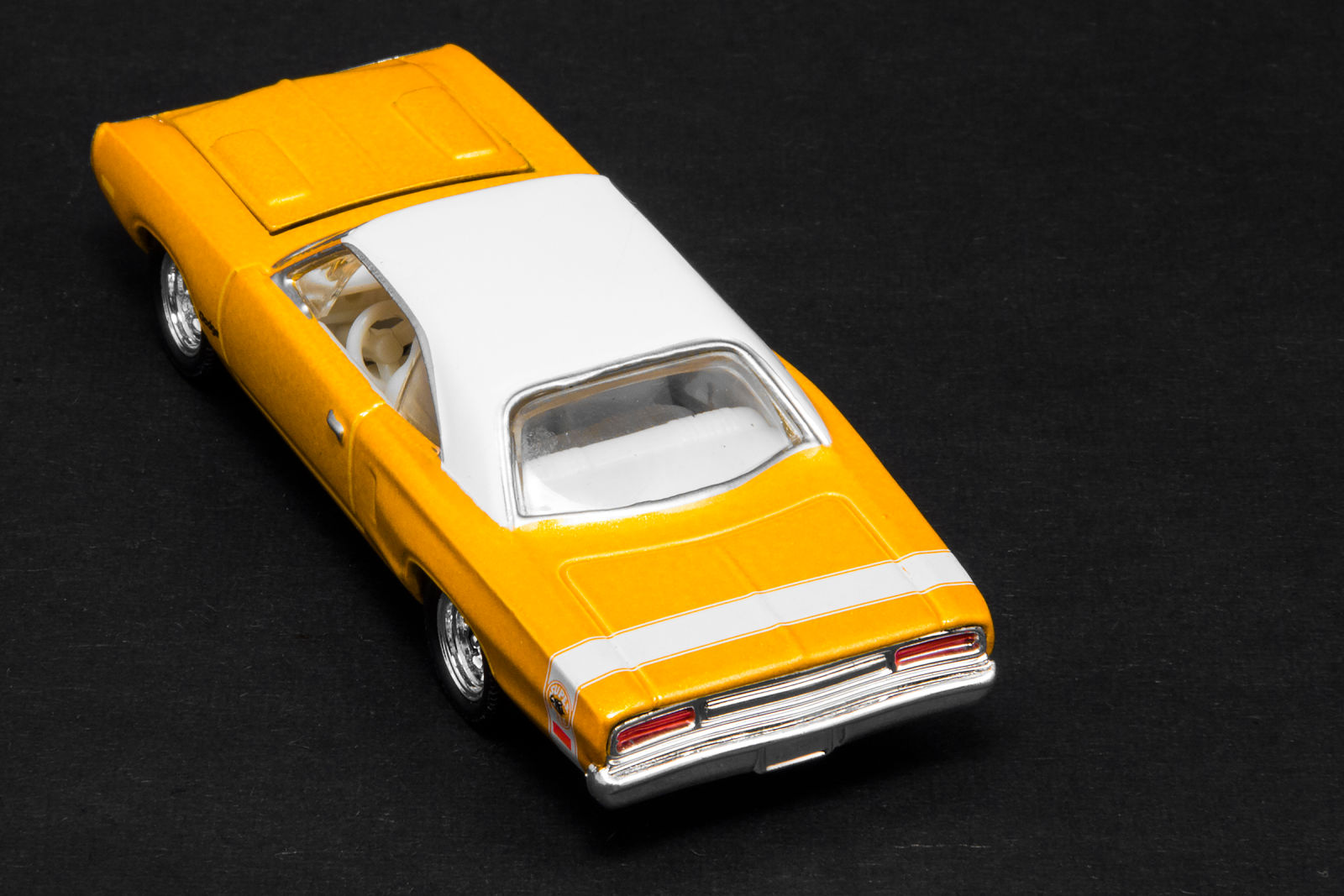
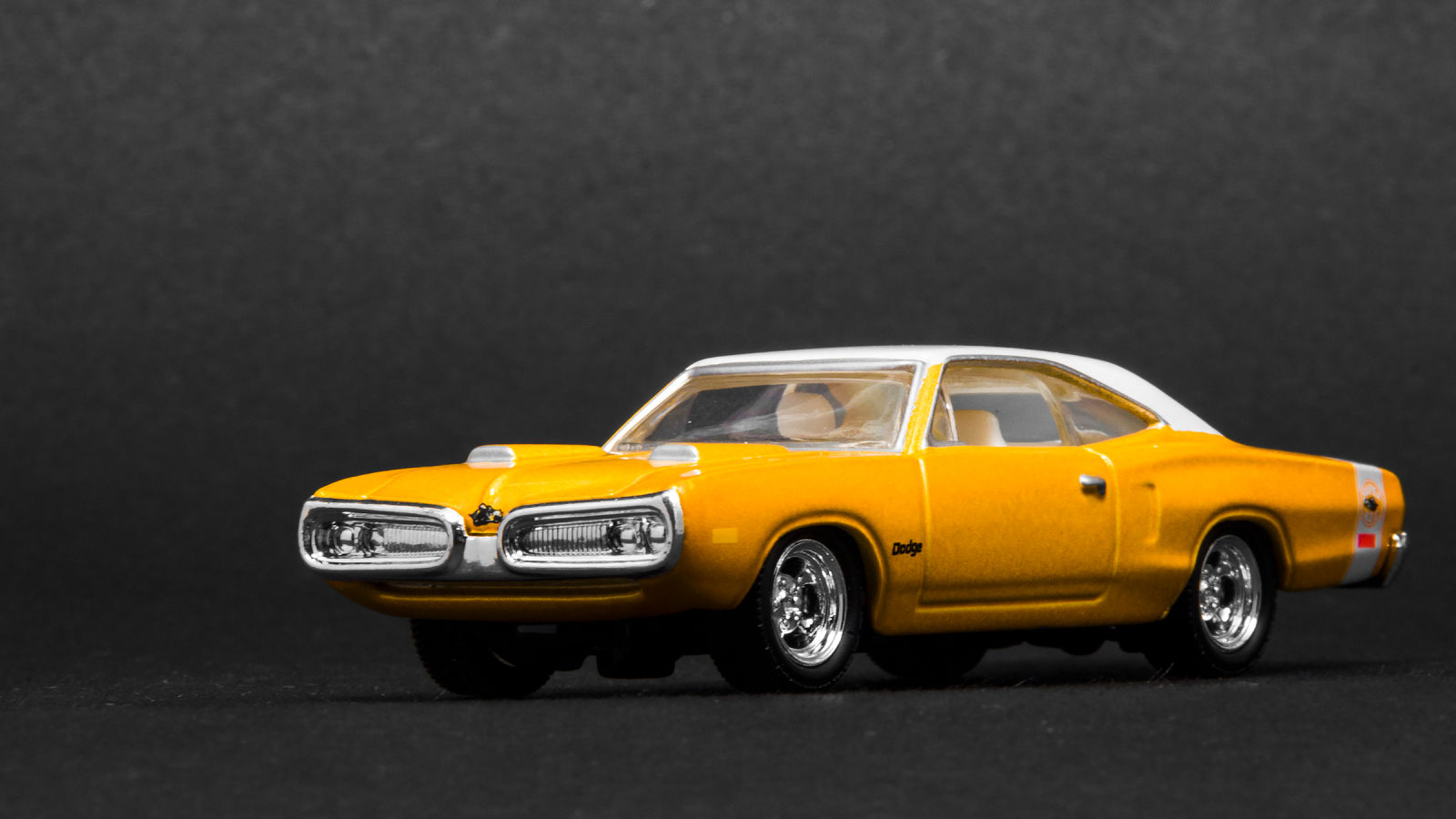
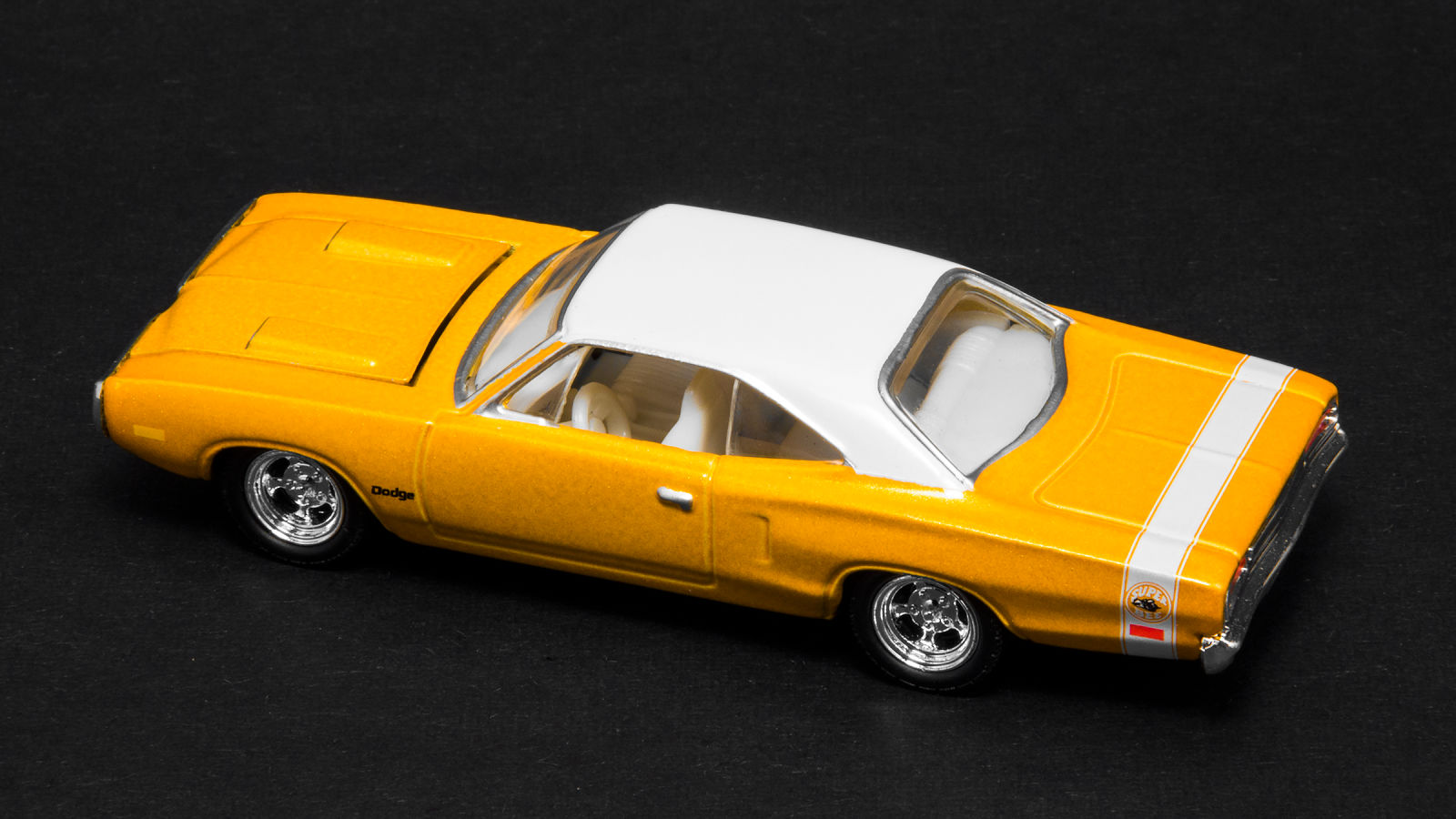
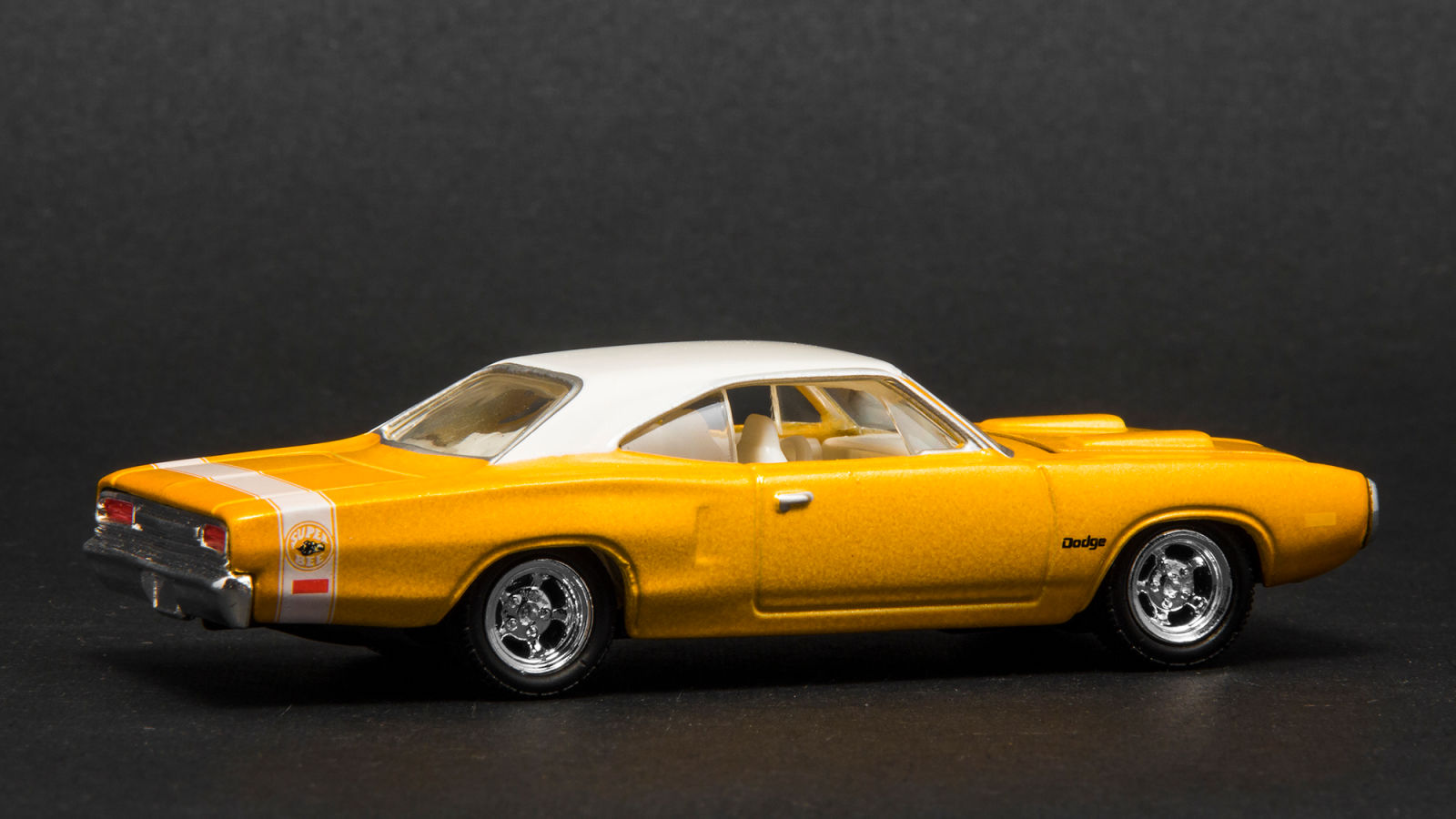
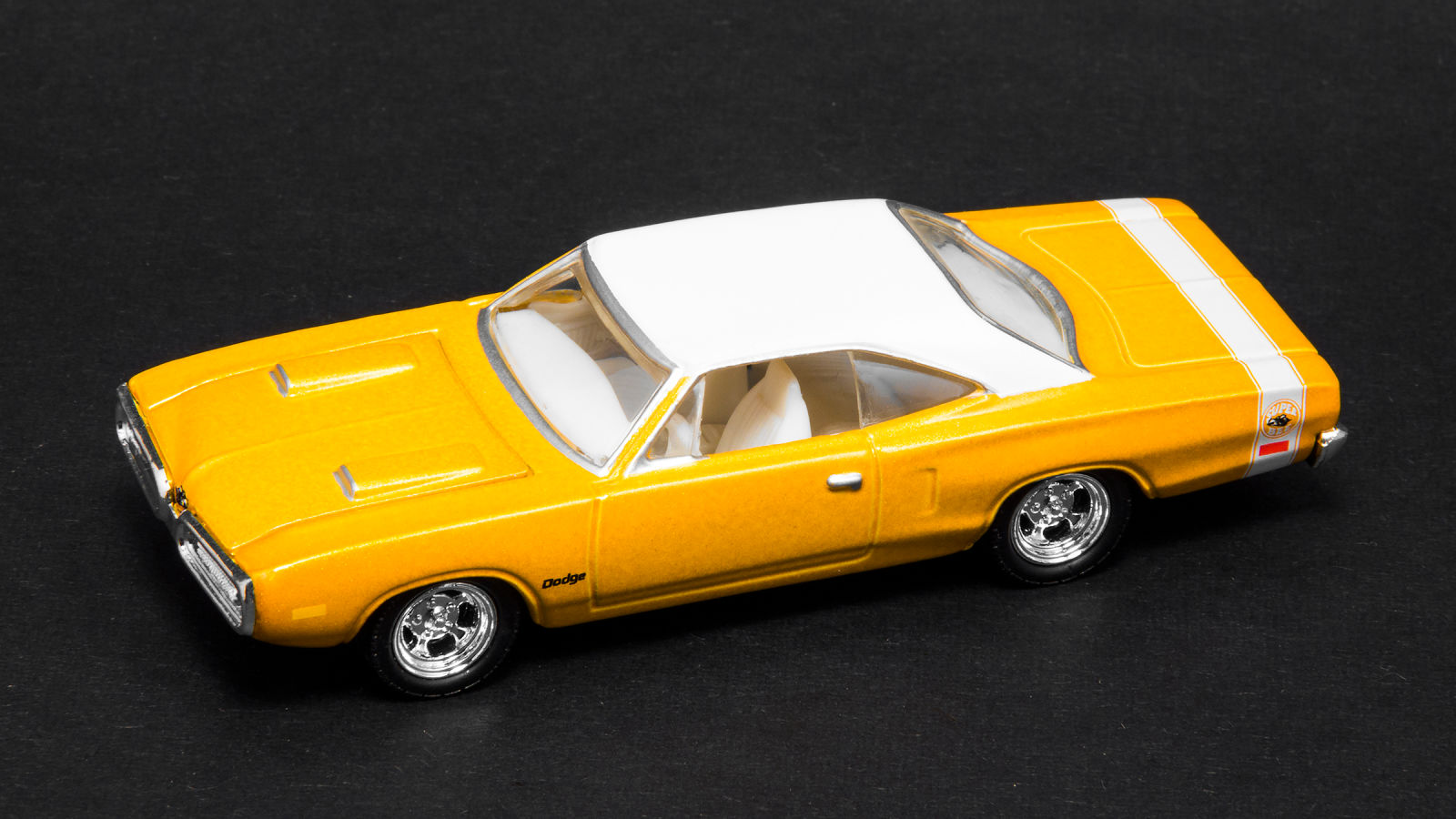
Today, we have this 1:64 yellow Dodge Super Bee with a white vinyl roof beautifully pieced together by Hot Wheels under the 100% collectibles.
The Super Bee is a product of sibling rivalry between two MOPAR divisions, Dodge and Plymouth that started back in 1968. The result was the Dodge Super Bee, a direct competitor to Plymouth’s Road Runner. Although a capable budget muscle car, it never was as successful as the Road Runner, which truly must have hurt.
The sheet metal on the Super Bee you see here is unique to 1970. To differentiate it from the Coronet that it was based on, the Super Bee did not get the dummy rear fender scoops as standard equipment. It also had horizontally divided (rather than individually segmented) taillamps. New options included a hood tach and spoiler. Buyers could order the R/T type bumble bee stripe or pipe-shaped upper and lower rear fender stripes with a circular Super Bee decal between them. The Super Bee was available in a number of wild colors, such as Plum Crazy, Sublime, and Go-Mango. Extras included the “Kruncher” and Bee-Liever” performance options. Base prices fell $64 but sales dropped to about 15,500 units. Hemis were installed in just 32 hardtops (21 with four speed) and 4 pillared coupes (all with the four speed). This was the last year that the Super Bee was based on the Coronet.
(Source: Muscle Car Club)